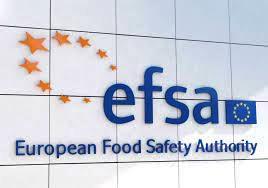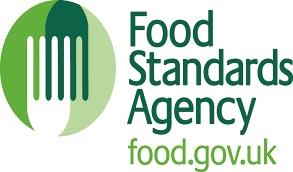 Attorney Tammi S. Etheridge of the Elon University School of Law recently published a consideration of joint and overlapping jurisdictions among Federal departments in the Washington and Lee Law Review. Ms. Etheridge cites the regulation of cell-cultured meat as an example of divided involvement in approval, regulation and enforcement. In 2018, the U.S. Food and Drug Administration (FDA) and the U. S. Department of Agriculture (USDA) both claimed sole jurisdiction over cell-cultured meat. Following intervention by the White House, a compromise was reached with the FDA involved in regulation of the selection of cells and the technology of propagation of muscle tissue with the USDA-Food Safety Inspection Service (FSIS) to be concerned with commercial cultivation, packaging and distribution of product.
Attorney Tammi S. Etheridge of the Elon University School of Law recently published a consideration of joint and overlapping jurisdictions among Federal departments in the Washington and Lee Law Review. Ms. Etheridge cites the regulation of cell-cultured meat as an example of divided involvement in approval, regulation and enforcement. In 2018, the U.S. Food and Drug Administration (FDA) and the U. S. Department of Agriculture (USDA) both claimed sole jurisdiction over cell-cultured meat. Following intervention by the White House, a compromise was reached with the FDA involved in regulation of the selection of cells and the technology of propagation of muscle tissue with the USDA-Food Safety Inspection Service (FSIS) to be concerned with commercial cultivation, packaging and distribution of product.
Etheridge considers that the joint regulation of cell-cultured meat is “both inappropriate and unnecessary”. The tenor of the review highlights the conflict of interest with respect to the USDA. This Department is “tasked with maximizing agricultural industry profits and with nourishing Americans”. These objectives are effectively in conflict with respect to cell-cultured meat since conventional slaughter, dismemberment and packaging are not involved in cell-cultured meat. This effectively renders the participation of the FSIS as irrelevant and redundant. In any event the USDA represents the interests of farmers, a situation at variance with production of a meat product using non-traditional fermentation technology.
 Having separate departments frame regulations for cell-cultured meat with the prospect of eventual harmonization appears to be an impossibility and even if accomplished will delay the development and commercialization of cell-cultured meat in the U.S. Both Singapore and Israel have approved the technology and issued regulations relating to production thereby facilitating sale and consumption. From press releases it appears that the E.U. is close to permitting the sale of cell-cultured protein products. Although the FDA has, in principle, approved cell-culture technology for a specific company, the USDA-FSIS has yet to follow with appropriate regulations. This situation is analogous to a bicycle manufacturer having received approval for a saddle without the wheels and frame. There is nothing to offer the potential cyclist.
Having separate departments frame regulations for cell-cultured meat with the prospect of eventual harmonization appears to be an impossibility and even if accomplished will delay the development and commercialization of cell-cultured meat in the U.S. Both Singapore and Israel have approved the technology and issued regulations relating to production thereby facilitating sale and consumption. From press releases it appears that the E.U. is close to permitting the sale of cell-cultured protein products. Although the FDA has, in principle, approved cell-culture technology for a specific company, the USDA-FSIS has yet to follow with appropriate regulations. This situation is analogous to a bicycle manufacturer having received approval for a saddle without the wheels and frame. There is nothing to offer the potential cyclist.
The article by Ms. Etheridge dealing with legal aspects of joint or overlapping jurisdiction among federal departments is well recognized with regard to food. The pizza conundrum exemplifies the conflict in oversight in the U. S. If a pizza has a sausage topping, it falls under the jurisdiction of the FSIS but with a cheese topping, the FDA is the regulatory agency of record. A similar situation occurs with egg breaking with a clear division figuratively and in reality in processing plants between the USDA and the FDA with respect to shell eggs and egg products, respectively.
 The inconsistencies that exist in the food sector as highlighted in the Etheridge article clearly predicate in favor of a unified Food Safety and Nutrition Agency focused on the well being of consumers. The FDA has demonstrated its incompetence and inefficiency with respect to the safety of food as exemplified by heavy metal contamination of juices and baby food, outbreaks of foodborne bacterial diseases associated with leafy greens, imported produce, seafood and the 2022, and possibly ongoing, infant formula contamination and production crisis. Currently, there are attempts to “fix” the FDA, but this Agency obviously lacks the leadership and inherent culture to implement recommendations made by advisory groups and by Congress.
The inconsistencies that exist in the food sector as highlighted in the Etheridge article clearly predicate in favor of a unified Food Safety and Nutrition Agency focused on the well being of consumers. The FDA has demonstrated its incompetence and inefficiency with respect to the safety of food as exemplified by heavy metal contamination of juices and baby food, outbreaks of foodborne bacterial diseases associated with leafy greens, imported produce, seafood and the 2022, and possibly ongoing, infant formula contamination and production crisis. Currently, there are attempts to “fix” the FDA, but this Agency obviously lacks the leadership and inherent culture to implement recommendations made by advisory groups and by Congress.
When faced with the prospect of a unified food safety and nutrition agency, Washington bureaucracy circles the wagons. Memorandums of agreement are signed promising cooperation and interdepartmental communication with concerted joint action, although in the end, nothing changes. Simply removing the food and nutrition responsibilities currently exercised by the FDA into a separate agency would be beneficial. Ultimately a seamless approach would require incorporation of the FSIS into a comprehensive program of regulation and enforcement of all food-related activities by the federal government.
 There is no logical explanation for maintaining an almost rigid separation of “meat and milk” as ordained in Leviticus. Food is food, nutrients are common and the same pathogens affect both products currently regulated by the FDA and the FSIS. A single agency with a commitment to food safety and food quality is long overdue. The U.S. should follow the example of other nations including Canada, the U.K. and the 27-Country E.U. with respect to food safety and nutrition.
There is no logical explanation for maintaining an almost rigid separation of “meat and milk” as ordained in Leviticus. Food is food, nutrients are common and the same pathogens affect both products currently regulated by the FDA and the FSIS. A single agency with a commitment to food safety and food quality is long overdue. The U.S. should follow the example of other nations including Canada, the U.K. and the 27-Country E.U. with respect to food safety and nutrition.